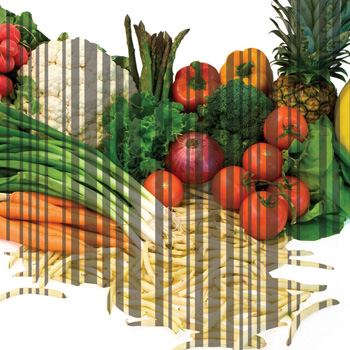LIMS: An Important Tool for Protecting Food and Beverage Brand Value

At first glance, a recall might seem like a food or beverage company’s biggest fear, but from an economic point of view, the cost of recalling a product in an orderly and controlled process pales in comparison to the cost of brand damage to a manufacturer’s product—and potentially losing the trust of consumers—regardless of the cause. Whether it’s a can of soda, a bag of corn chips or a jar of peanut butter, any food product not only needs to be safe for consumption but also taste exactly the same every single time. A laboratory management information system (LIMS) helps food producers ensure their brands’ reputation by managing quality assurance data through every step of the food production process. Housing and tracking this enormous quantity of data is critical to ensuring that every ingredient in a particular food product meets quality expectations—and a LIMS allows food manufacturers to act quickly if anything goes wrong.
A host of government agencies monitors the safety of thousands of products, from toys containing lead, automobiles with faulty electronics, to Escherichia coli-contaminated lettuce and spinach. As it relates to food safety in particular, there has been a fractured history of multiple regulatory agencies having partial authority to monitor the production or distribution of food in the United States. Passing the Food Safety Modernization Act (FSMA) in 2011 has brought the monitoring and regulating of food under one roof, allowing the U.S. Food and Drug Administration (FDA) to have more far-reaching authority to compel producers to comply with new regulations and demand recalls if warranted. In early June, 2012 for example, www.foodsafety.gov listed more than a dozen recalls, ranging from Hannaford Supermarkets mini-frosted cookies with labels that did not list egg as an ingredient to Ben & Jerry’s ice cream containing fudge-covered wafers that had been “manufactured on shared equipment that processes peanuts and tree nuts.”
The ultimate price for the food manufacturers such as Hannaford and Unilever (which issued the recall for Ben & Jerry’s) is not only the impact on shareholders and potential loss of revenue due to these recalls but, perhaps more importantly, the loss of the buying public’s trust—and consumers are notorious for having long memories. In addition, food contamination of any type can expose a food producer to potential litigation and the expenses associated with addressing allegations.
New Legislation
In an effort to tighten up supervision of the nation’s food supply, the FSMA requires more frequent inspection of all food facilities, mandates inspector access to records and requires food processing facilities to develop, implement and monitor safety plans that identify and protect against hazards. The law compels all food plants to register with FDA and pay an annual fee that, along with fees for food inspection and recall, will help pay for the expansion of oversight. Along with other measures that enhance FDA’s ability to prevent the distribution of unsafe food, the FSMA authorizes the agency to order and/or enforce food recalls of products that may cause adverse health consequences or even death—and charge all the costs back to the manufacturer. The FSMA also requires a producer to track the origins of any raw materials used in food production, ensuring the finished product is safe for human consumption and allowing for full traceability of each ingredient introduced into the production process. Traceability is a critical factor in determining the source of any out-of-specification process or material, allowing the producer or manufacturer to stop production at the source of contamination. This ability to determine the source of contamination and to pinpoint all affected batches allows the producer to minimize the probability of delivering a contaminated product to market, and reduces the risk—and cost—of product recall due to food borne illness.
A LIMS plays a critical role in how traceability is integrated into the food production process. In order to ensure the highest product quality, food producers must perform precise product testing at all stages of food production, processing and distribution. Each step in the production of a particular food or beverage is associated with certain challenges that must be addressed or standards that must be met. LIMS play a critical role in the workflow of food producers, ensuring that analytical data from all parts of the delivery chain are captured and analyzed.
Anytime there’s a change in location, packaging or processing, samples must be taken, and a LIMS tracks this data and manages the references between the test and the final shipped product. Tests can include ingredient identification analysis, microbiology tests, foreign body testing, pesticide analysis and so on. Food producers must be able to determine where hazards, such as contaminants, could be introduced within their process. For example, this could include control points where the raw ingredients are stored before being processed for the canning line.
Once safety controls are developed and implemented to mitigate the risk of contamination, the LIMS can monitor these control points with samples taken, historical data, trends, corrective remedies and so on. The LIMS collates all the data that may need to be provided to regulators during an audit.
Managing Batch Relationships
Sophisticated LIMS solutions are also designed to efficiently manage batch relationships between raw materials, processed materials and packaged goods, enabling analysts to identify which batches are affected by any contamination and automatically suspend release of a product during investigation. LIMS are designed to manage and control the quality assurance process, organizing and storing analytical data and facilitating the conversion of data to usable information. This process is fully automated, ensuring that any samples that fall outside acceptable limits are highlighted, prompting immediate investigation before product has been released to consumers.
Food analysis techniques produce large quantities of different types of data. LIMS are used to automatically gather, store, manage and report on these data, including sample preparation data, instrument-generated data, standards, reagents and media, training records for lab personnel, reference data for users and management and metric reports. Notes can be used to attach Standard Operating Procedure documents to instruments and operators within the LIMS, while links to external repositories and websites can also be configured to allow users to review supporting information. Certificates are stored within the LIMS for traceability while templates are used to generate consistent formats of analytical reports, or to maintain compliance with regulatory reporting requirements.
Food samples used for safety testing are often time- and condition-sensitive, requiring fast turnaround or storage in suitable conditions. LIMS are capable of identifying each sample, uniquely generating labels, barcodes and hazard data and storing metadata and sample life-cycle transactions. Freeze thaw cycles and preparation steps are logged, sample inventory is maintained and work for laboratory staff is prioritized. Overall, the use of LIMS in the food safety workflow ensures that samples are handled correctly and processed within allowed timeframes. Finally, each transaction in this process is fully audited, ensuring full traceability of tests and results in the event of a regulatory audit or product recall.
Because automating the collection and analysis of laboratory data is a primary function of LIMS, the LIMS helps laboratory analysts avoid any transcription errors associated with conventional manual data handling such as the use of spreadsheets, paper notebooks or collation of data from multiple instruments. The LIMS is also capable of tracking instrument status, identifying any scheduling requirements for calibration and/or service and reporting on the specific parts needing replacement.
A LIMS Solution in Operation
One of the world’s largest dairy ingredient processing companies processes 100,000 tons of dairy ingredients annually. The company has two R&D and manufacturing quality assurance/quality control laboratories that support multiple sites across four geographic regions. The laboratories use 200 different methods of analysis to evaluate produce appearance, performance, texture and taste.
The company uses a LIMS to ensure that its laboratories will achieve repeatable production levels and to allow laboratory managers to control the testing procedures while keeping track of information. The company’s LIMS also provides the tools to report information in a format that satisfies the entire organization and offers a secure, auditable environment, facilitating regulatory compliance while integrating the laboratory environment with enterprise resource planning and other critical systems to allow immediate, real-time access to results.
Conclusion
Food recalls are very expensive in terms of financial costs that directly impact the bottom line, reduced shareholder confidence and ultimately brand reputation among consumers. The ability to trace the raw materials and ingredients used at any point in the food production process and distribution chain is critical to ensuring product quality and regulatory compliance, and to minimize the costs of any recall as far as possible. Batch traceability can be easily and effectively achieved using a proficient LIMS solution since a LIMS controls the sample chain of custody, automates data collection from instruments and analyzers, manages data by exception and facilitates certification. The LIMS collects results directly from instruments and determines whether they are within acceptable limits, making it the ideal tool for managing and tracking the required quality data for food producers.
For more information about LIMS in food and beverage production, visit www.thermoscientific.com/foodsafetyresources.
Looking for a reprint of this article?
From high-res PDFs to custom plaques, order your copy today!




